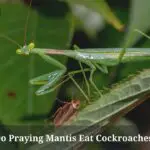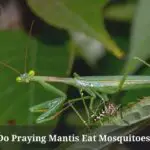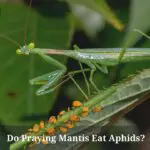Praying mantises have a reputation for being able to eat a huge variety of things. Against that background, there are those who may have an interest in knowing whether the mantises can eat the odd-looking insects known as earwigs. Read on, to find out.
Do praying mantis eat earwigs? Yes, earwigs are among the insects that praying mantis can eat. After successfully ambushing the earwigs, praying mantises normally clutch them using their powerful hook-like forelimbs, pull them to their mouthparts and eat them alive.
What tends to make earwig hunting a bit challenging for praying mantises is the fact that the earwigs are mostly nocturnal. On the other hand, the praying mantises are mostly diurnal.

Nonetheless, when the praying mantises happen to encounter the earwigs, they usually go ahead to eat them.
As most people know though, the earwigs are quite fast. This brings about an interesting question on if praying mantises can really catch the earwigs. So that is the question we will start by addressing.
Can A Praying Mantis Catch An Earwig?
Yes, a praying mantis can manage to catch an earwig: mainly by ambushing it.
Thus what the praying mantis relies on is not a strategy of running after the earwig. Rather, what the praying mantis relies on is a strategy of setting an ambush and then waiting for the earwig to fall into the ambush.
At times, the mantis may not even have set up the ambush with the earwig specifically in mind. It just lies in wait, for any insect that will come along. And if that insect happens to be an earwig, the praying mantis proceeds to grasp it without hesitation.
Do Praying Mantis Eat Earwigs?
So far, we have said that, by way of ambush, the praying mantis is often able to catch an earwig. This leads to a question on what happens next or what the mantis does with the caught earwig.
Can a mantis eat an earwig? The answer is ‘yes’ – praying mantis do eat earwigs.
After managing to successfully ambush them, praying mantises usually waste no time in starting to devour the earwigs.
Thus once the earwig is in the mantis’ hook-like forearms, it may first have its head eaten off. Then the back part of its body is subsequently devoured by the mantis.
Alternatively, the mantis may start by eating the back part of the earwig’s body. Then it moves progressively towards the head, eating the head last.
But most mantises seem to prefer the approach of snapping off the earwig’s head first.
Do Baby Praying Mantis Eat Earwigs?
Earwigs are among the smaller and softer insects that baby praying mantises survive on in the earlier days.
So the true position is that the baby mantises do indeed eat earwigs – when they happen to find them.
Which Earwigs Do Praying Mantis Eat?
Both in the wild and in domestic settings, we tend to find some earwigs that are dead and some that are alive.
What we now need to know is which (between live and dead) earwigs the praying mantises are able to eat.
Do Praying Mantis Eat Live Earwigs?
Yes, praying mantises are capable of eating live earwigs.
When a praying mantis sees a live earwig, it will normally lie still – and wait for the earwig to keep on coming closer. Then at the opportune moment (once the earwig is really close), the mantis just grabs it and gobbles it up.
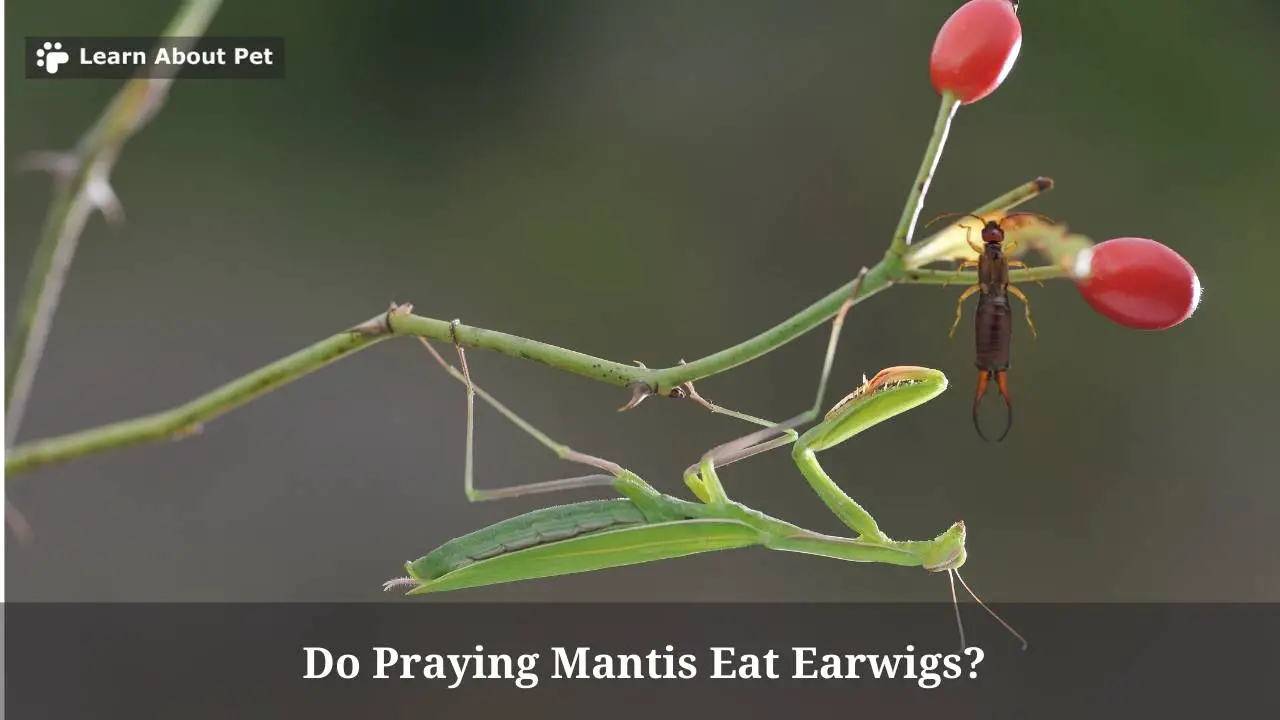
Do Praying Mantis Eat Dead Earwigs?
No, praying mantis are not able to eat dead earwigs.
When a mantis sees an earwig, it first checks whether the earwig is alive or dead. If it is alive, the mantis may eat it. But if the earwig is already dead, the mantis won’t even think of eating it.
How Often Will Praying Mantis Eat Earwigs?
In the wild, a mantis is usually only able to eat earwigs once in a while. That is because the earwigs are mostly nocturnal, while the mantises are mostly diurnal. Thus chances of the mantis encountering earwigs are not very high.
But when the mantises find earwigs, they do eat them.
For pet mantises though, it is possible to eat earwigs more frequently – if the same are availed on a regular basis.
One may want to know, can praying mantis eat earwigs daily? And the answer is that daily feeding on earwigs for a praying mantis is probably not right.
Mantises are supposed to eat twice per week or so as adults. In the more formative stages of their lives, they may eat thrice per week. Nowhere does the idea of having a mantis eat (earwigs or anything else) on a daily basis come up.
How Much Earwigs Can Praying Mantis Eat?
Earwigs are not very big insects. Thus if what you are feeding is an adult mantis, you may offer 3-5 earwigs. If what you are feeding is a baby mantis, you may offer 1-2 earwigs.
It is best to avoid overfeeding the mantis (on earwigs or any other foodstuffs), to avoid causing it health problems.
Final Verdict – Do Praying Mantis Eat Earwigs
Do praying mantis eat earwigs? Praying mantis do eat earwigs. Earwigs are among the insects whose modest size makes them edible by both the youngest (nymph) and older mantises.
Though the earwigs are fast-moving insects, mantises normally don’t try to catch them by chasing them – but by ambushing them.
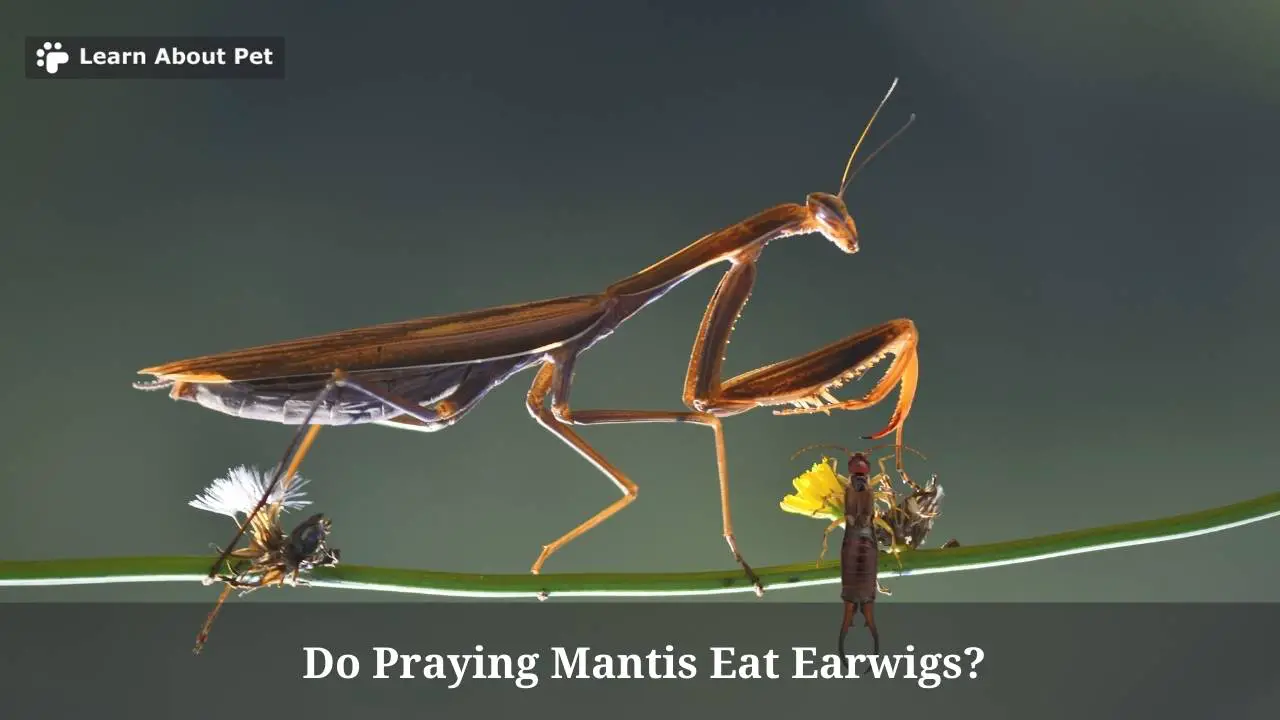
Once the mantises successfully ambush the earwigs, they may grasp them tightly using their hook-like forearms. Then they eat them.
If you have a pet praying mantis, earwigs may be a suitable food for it. That is as long as you can collect high quality live earwigs as food for the pet mantis.
As a pet lover, make sure to learn about pet more and give your pet mantis a good and comfortable life!

Welcome to Learn About Pet. My name is Rajkumar Ravichandran and I love all pets, travel, and amazing food. I write about my passion and personal experience caring for multiple pets in this blog! ❤️
Post Disclaimer
DISCLAIMER: THIS BLOG OR WEBSITE, "Learn About Pet", DOES NOT PROVIDE YOU WITH MEDICAL ADVICE AND IS NOT A SUBSTITUTE FOR MEDICAL ADVICE. ALWAYS GET IN TOUCH WITH YOUR PERSONAL VETERINARIAN AND USE INFORMATION HERE AS GENERAL ADVICE.
The information, including but not limited to, text, graphics, images and other material contained on this website are for informational purposes only. No material on this site is intended to be a substitute for professional veterinary advice, food recommendation, diagnosis, or treatment. Always seek the advice of your veterinarian or other qualified health care provider with any questions you may have regarding a medical condition or for pet food related questions.



